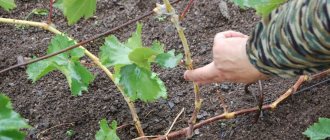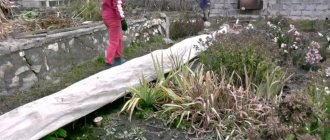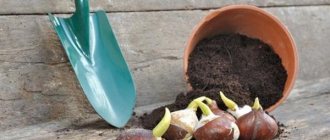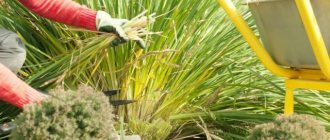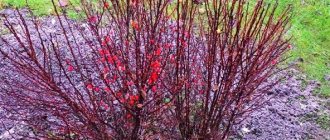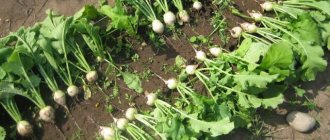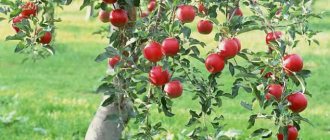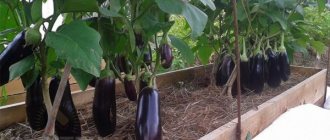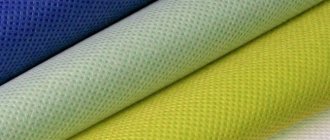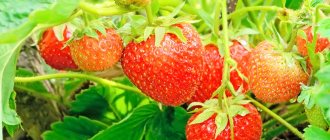Do I need to cover strawberries for the winter?
The best covering material for strawberries is snow. It’s a gardeners’ dream: the strawberries will cover themselves with snow – that’s one less thing to worry about. But snow, it turns out, is not as reliable an assistant in preserving strawberries as it seems.
Let's take a closer look at whether strawberries need to be covered for the winter and what the danger is if you don't do this.
Covering strawberries for the winter
See what unpleasant surprises there can be in the natural wintering of strawberries:
- snowless winters with severe frosts;
- an unexpected thaw gives an impetus to the awakening of plants, and stripped strawberries die from frost;
- an icy wind can sweep away a layer of snow and the strawberries can freeze;
- the volume of snow is too small to protect the plants;
- bulging - when the plant is pushed to the surface by frozen soil;
- drying out of the crop from winter winds and frosts.
Preparatory work
Preparatory work prior to covering strawberry bushes for winter is an important procedure that helps keep the plants healthy and strong.
Preparation consists of several points, namely:
- mustache trimming;
- removal of old, rotten and diseased leaves;
- loosening the soil around the bushes and between the beds;
- weeding the beds to remove all weeds;
- plant nutrition;
- treatment (if necessary) with fungicides.
On the eve of sheltering the strawberries for the winter, it is necessary to clear the bed of weeds.
If after weeding a small number of weeds still manage to sprout, they will no longer cause much harm, since they will not be able to scatter their seeds. In order not to damage the root system of “dormant” strawberries, it is better to weed these plants with the onset of spring.
The next important stage of preparation is trimming the strawberry mustache. You should remove all the mustaches that are unnecessary for propagation, which take a lot of juice and nutrients from the plant, which is why in the spring the bush can “wake up” very weak or even die. You should also remove leaves from the bushes (old, rotten and diseased) and burn them outside the site.
Do not forget about loosening the soil - this procedure will saturate the soil with oxygen and allow the roots to breathe freely. Loosening needs to be done not only around the strawberry bushes, but also between the rows.
When loosening, it is important not to expose the roots, but, on the contrary, to hill up the plants well.
Conditions for keeping berries and possible methods of protection in winter
We conducted an analysis and compiled a database on the types and methods of protecting strawberries. We present you the most useful information so that you can choose the appropriate covering method for your garden.
Sheltering plants in a greenhouse
There are two types of greenhouses: winter and summer:
- A winter greenhouse assumes the presence of a heating, lighting, and watering system, so there is no question of covering the plants.
- A summer greenhouse in winter requires maintaining stable heat in unheated structures. Suitable options are mulching with a 5-7 centimeter layer of any natural (organic) material (straw, sawdust, etc.), or placing a fence around the bed and covering the top with plastic film or agrofibre.
There are artificial and natural types of insulation
Shelter in open ground
There are two types of insulation:
- Artificial.
- Natural (natural).
We will describe each insulation option in more detail below.
Preliminary preparation
All required preparatory work is carried out in full, regardless of the chosen protection option. Operational actions are aimed at improving the health of the plant before winter and preparing the soil. The outside air temperature is a universal reference point, but there are separate recommendations for each variety. The characteristics of the soil, its composition, and location relative to the sun’s rays are also taken into account.
After the autumn transplantation of bushes, at least one and a half months must pass to obtain a good harvest in the future. During this time, the bushes will take root and adapt to the new holes. The timing is determined taking into account the specifics of the site and the variety of garden strawberries.
If the bushes are not replanted, then the growing vines are thinned out. The procedure involves tearing off old leaves and long tendrils. Faded, withered bushes and dried specimens are removed from the ground. Healthy bushes are planted in their place. Thinning is done to optimize the nutrition of the remaining plants, which will receive the full amount of minerals and vitamins.
Old plants shade new bushes and they do not receive ultraviolet rays. Negativity manifests itself in young plants that cannot develop in cramped conditions. The gardener removes many pests from the garden bed, thinning the vegetation on the plot before the cold weather. The beetles are preparing to overwinter in the folds of spent leaves, so a mass with insects under the film is not required.
Preparatory measures before sheltering for the winter:
- The soil is fed so that the plant survives the winter without loss. Microelements and vitamins strengthen the plant. The peculiarity of autumn enrichment is that only organic matter is introduced, nitrogen compounds are not practiced. Humus and manure are used in calculated quantities.
- The soil is loosened after the end of the watering period. The procedure allows the root system to breathe, and moisture delivers nutrients faster.
- The neck of the plant is mulched at the root. The layer protects the ground from cracks and provides additional insulation. The absence of cracks is important, because cold air flows through them to the roots. Peat and humus and pine needles are used as mulch materials. These components not only protect from the cold, but also additionally feed the plants.
- The bushes are sprayed with Bordeaux mixture at a concentration of 3%. The plants are completely processed, left to dry (1.5-2 days) and after that they can be closed. To prepare the solution, take 3 g of the substance and dissolve it in water at a temperature of 22−24 ° C (1 l). During treatment, the bushes are wetted, but not filled with the preparation; contact with the ground is allowed.
- A protective barrier is constructed around the bed to preserve the layer of first and subsequent snow. Available materials, pegs, and leftover panels are used.
Interesting!
Gardeners often wonder about insulating strawberry beds. The climate is ideal for berries in the Moscow region, where summer residents do not bother wrapping up their plots. Tall plants can easily survive the cold season with frosts down to -20 °C.
More severe climatic conditions require the creation of a coating if a dry winter without snow is expected. In the Volga region, strawberries are rarely grown, because care is expensive and the yields are low.
How to protect the plant from frost?
Let's consider how to protect strawberries from winter misfortunes and how to cover the plant.
Polyethylene film
Types of films:
- Two-color – contains 2 layers. The light outer layer of the film prevents the soil from overheating, which affects the development of the root system, reflects the sun's rays and protects the leaves from burns. The black inner layer prevents the proliferation of pests and weeds.
- Black color – protects plants from frost and helps retain heat.
- White color – reflects solar radiation.
The main disadvantage of the film is its inability to allow air to pass through. When using it, it is recommended to create conditions for air circulation, that is, to form an air layer between the polyethylene and the plants. Otherwise, the use of an airtight film leads to rotting of the roots and overheating of the leaf part of the bush.
The film can lead to rotting of the roots
Agrofibre
Non-woven material, environmentally friendly and specially treated with anti-UV. Its main advantage is the low weight of the insulation, which allows air and sunlight to pass through, which helps plants breathe and protects them from frost.
Spunbond
An analogue of agrofibre, made of thin polymer fiber. Creates a special microclimate due to air and light permeability. Resistant to mold and at the same time protects the soil from erosion (blown away by the wind).
Usually the beds are covered with artificial canvas before planting the bushes. But you can cover it after planting the strawberries.
It is worth explaining how to cover already planted strawberries with black material:
- The bed is covered with material, temporarily securing the fabric around the edges.
- Make holes (it’s better to make a crosswise cut) above the bushes, the foliage, straighten it out through them, while pressing the canvas to the ground, straighten it and stretch it.
- The edges are finally secured with special pins.
- Around the bed, the edges of the fabric can be covered with earth.
Agrofibre protects strawberries well from frost
Plastic bottles
Questionable covering material. Due to their airtightness, strawberry bushes may dry out during the winter. And in early spring, due to greenhouse conditions, they can begin to grow early, risking freezing from return frosts.
Natural (natural) covering materials
Do you use folk signs in gardening?
The most common natural insulation materials are:
- Leaves. The foliage of broad-leaved trees is used. Oak leaves are the leaders - they are less prone to rotting and serve longer as a warm “blanket” for the bushes.
- Sawdust. Use only well-dried ones to avoid severe rotting. The layer height is about 10 cm. The disadvantage is that sawdust oxidizes the soil, deprives it of nitrogen and takes water from the ground, which is not beneficial for strawberry bushes.
- Needles. Unlike sawdust, it does not absorb moisture, which means the bush will not dry out. Retains heat in the garden bed and protects strawberry bushes from rodents that cannot stand the smell of pine needles. There is only one drawback - it acidifies the soil.
- Straw. It produces fungicides - antiseptic substances that destroy mold and fungi. This material not only protects plants from frost, but also maintains its health. But the problem is that straw attracts mice and serves as a home for them, providing comfortable conditions for gnawing strawberry roots.
In Siberia
Unlike Transbaikalia, winter in the rest of Siberia is snowy, frosts can drop to -45 degrees. Therefore, even if strawberries are covered with a deep cover of snow for the winter, they can freeze in Siberia. Even if the bushes move away in the spring, the harvest will be worse and there will be fewer berries.
In this region they practice mulching with pine needles and covering with spruce branches. But since the advent of non-woven materials for insulation, many gardeners use an air-dry shelter with a frame. Since the snow cover can reach a depth of up to 2 meters, the frame is made more reliable, for example, from wooden panels.
When to cover a crop?
The most important thing: do not overdo it with the timing of covering the strawberries. Plants that are covered early for the winter will rot, and those that are covered late may freeze. Covering time may vary for each region of the country.
For each region of the country, strawberries need to be covered at different times.
In Siberia
Despite heavy snowfalls, insulation is mandatory due to severe frosts. Early frosts suggest covering the strawberries in the first ten days of October.
In Transbaikalia
Strong winds, low temperatures, lack of snow. Frosts on the soil begin in late September - early October. By this time, the strawberries should be ready to winter.
In the Amur region
Frosts begin in September in the north and at the end of September in the central and southern regions. The strawberries should be covered by this time.
In Khabarovsk
Strong winds and low temperatures - the main danger for strawberries - occur in the second half of October. By this time the bushes should be protected.
In outskirts of Moscow
Strawberries should be covered at the end of October or early November.
In the Leningrad region
Covering activities are completed in the last ten days of October.
Warming strawberries with natural material
How to choose a covering material: an overview of various options
There are several materials suitable for wrapping strawberries; which one to choose depends on the growing conditions of the berries. You can take natural and artificial. Each variety has its own pros and cons.
Natural shelters
These include spruce branches (spruce or pine), sawdust and straw. The bushes should not be completely covered; the material should be placed around the leaf rosette, protecting the roots and row spacing from frost.
Lapnik
This is the most convenient material to use. It is suitable for all regions where there are coniferous forests. Advantages:
- easy to cover and clean;
- free;
- holds snow well;
- does not cake and does not rot;
- does not prevent the soil from warming up after the snow melts.
There are only two disadvantages:
- acidifies the soil;
- large strawberry plantations require a lot of it - it’s not good for nature, and it’s labor-intensive for the summer resident.
Sawdust
Suitable for those areas where winters have little snow, with short thaws. The layer should be about 10 cm. Advantages of the material:
- traps snow;
- cheap or free;
- easy to cover, can be used together with agrofibre.
There are quite a lot of disadvantages:
- acidify the soil and reduce the amount of nitrogen in the soil;
- if after the thaw snow falls and it is frosty, the sawdust becomes iced and instead of warming the strawberry bushes, they are frozen;
- They do not conduct heat well in the spring; as a result, the strawberries will wake up and bloom later, which can lead to return frosts during flowering.
Of course, you can cover strawberries with sawdust, but in the spring you need to rake them from the beds as soon as the snow melts, and it’s best to put them in the spaces between the rows and cover the top of the bed with spunbond.
Straw
The material is suitable for southern regions with a small amount of snow in winter and, accordingly, a small amount of melt water in spring. The straw layer should be 20 cm.
Advantages:
- cheap;
- easy to cover and remove.
There are many more disadvantages:
- weakly retains snow cover;
- strongly absorbs moisture, which is why, as in the case of sawdust, bushes can become icy in winter and damp out in spring, their roots and heart (the place where new shoots form) can rot and be affected by fungi;
- prevents the soil from warming up in the spring;
- serves as a home for mice that can nibble on strawberries.
Video: covering strawberries with straw for the winter
Purchased materials
These include spunbond and polyethylene film.
Spunbond
This is the undisputed leader among materials for covering strawberries. It works due to the formation of a layer of air under it, which retains heat well. It is used throughout Russia, excluding the southernmost regions with sudden temperature changes. For example, in November-December there are significant advantages, strawberries may even begin to bloom, and then the cold winds, rains and frosts that begin will destroy the plant.
Pros:
- breathes and creates an air layer that retains heat well;
- in the spring you don’t have to remove it, just ventilate it - this will make it possible to get the first long-awaited berries one or two weeks earlier;
- does not rot or cake;
- Easy to remove and put on again if necessary.
Minuses:
- relatively expensive;
- must be changed every two to three years;
- For maximum efficiency, you need to install arcs on the beds and cover them with a double layer of agrofibre.
Video: features of covering strawberries for the winter with agrofibre
Previously, I always mulched and covered the strawberry beds with sawdust for the winter, fortunately they were free - there was a lot left after building the house. As a result, the bushes bore fruit later than their neighbors, and there was a harvest—the cat cried. Then I switched to mulching with black spunbond, and in the winter I covered the beds with a tunnel made of two layers of white agrofibre with a density of 30 g/m. The result was not long in coming: despite severe frosts in winter (up to 37 °C), which alternated with sleet and above-zero temperatures, strawberries winter well and the first berries ripen a week earlier.
How to properly protect strawberries?
Adult
The plants are strong, with a well-formed root structure, and tolerate winter well. In some regions where there are snowy winters and no abnormally low temperatures, a little insulation can be done for prevention.
Planted in autumn
The crop adapts to the soil, tries to take root, and winter is a difficult test for it, due to the underdeveloped leaf and root systems. Berry bushes may not cope without the help of gardeners.
Before frost, it is necessary to mulch with natural shelter or cover with artificial insulation and provide an air cushion.
young
By the beginning of winter, the young bushes had not yet grown strong. The winter period is more difficult for them to tolerate than for an adult plant. You can help by completely hiding the planting with a layer of mulch. And in cold regions it is better to use several layers of spunbond reinforced on a frame shelter.
In the pyramid
Strawberries have their own methods of covering. In regions where there is heavy snowfall, you can do without special shelter. It is enough to shovel the snow and fill the pyramid with the top. If the structure is high or the winter is expected to be snowless, then it must be covered around the perimeter with artificial insulation in several layers.
Several layers of spunbond are best used for young bushes
Do strawberries need winter shelter?
In autumn-winter, berry crops may suffer from the following unfavorable factors:
- Provocative thaws. When, after the establishment of stable frosts, the warmth suddenly returns and the plants awaken. The subsequent cold weather destroys the bushes.
- Lack or insufficient amount of snow. The strawberry root system freezes.
- Drying cold wind. Sudden strong gusts of wind dry out strawberry buds.
- Bulging. Frozen soil pushes out plants that were planted this fall that did not have time to take root properly.
Strawberries can freeze in winter
With any of these options, it is necessary to organize a winter shelter for strawberry plantations. In regions where the layer of snowfall is at least 0.3 m, this is usually not required.
The best insulation for strawberries is snow.
We never cover strawberry beds with anything for the winter, because mice like to nest under a layer of insulating material. In addition, in the spring, with early thaws, the risk of damping off the bushes under cover is very high. Natural snow cover reliably protects plants from frost. We usually always have a lot of snow in Siberia.
How can you not insulate strawberries for the winter?
Please note what you should not protect strawberries from frost for the winter:
- leaves (litter from fruit trees) - pests will definitely be present in them;
- waste after cleaning the garden. For example, cut raspberry branches and tops of vegetable plants can transmit unnecessary infections to it - they have common pests and diseases with our crop.
Briefly about the important things, or how to insulate the garden bed
Many owners do not rely only on plastic film or spunbond, but also use shelter made from plants, leaves of fruit trees, and other materials. Such a layer undoubtedly provides optimal temperature and humidity conditions for the bed. However, it is worth knowing what to use as a cover for the berries, and what to avoid.
Shelter for strawberries from dry plants
The strawberry bed can be filled with:
- dry leaves of fruit trees if you are sure of their safety;
- sawdust or shavings. However, they will need to be removed as early as possible in the spring - they acidify the soil;
- stalks of corn, peppers and even marigolds. In this case, you should spread poison on top to prevent mice that might come and feast on the vegetable plants.
Attention! You can use moss, as well as branches of spruce trees. It is worth laying the material on top of the bushes so as not to break or damage the plants.
